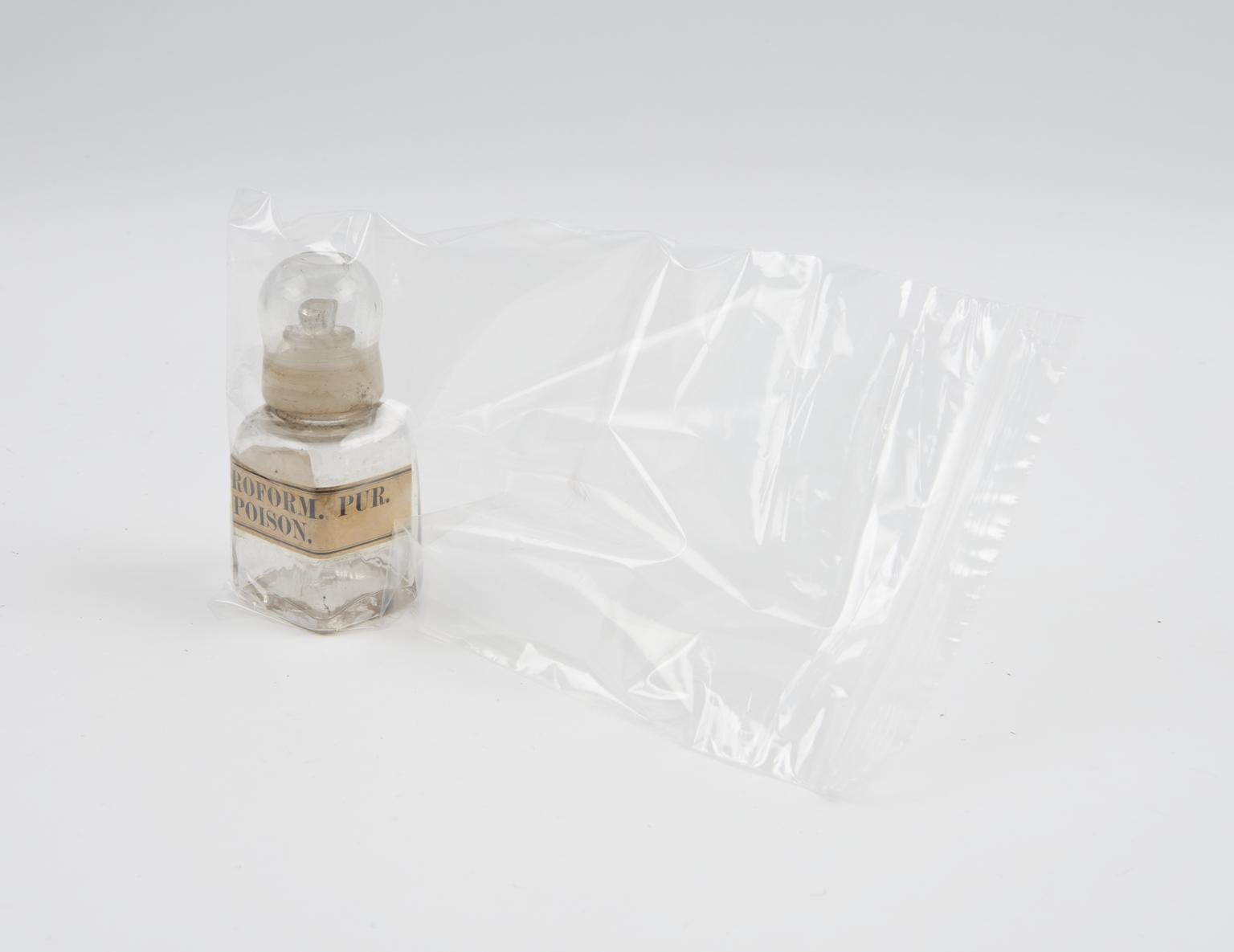Two bottles, clear glass
Two bottles, clear glass, with metal cap, for quinine sulphate tablets, with contents by Burroughs Wellcome of London, 1914 to 1918














Field medical pannier, canvas with leather and metal fittings, interior compartments, contents include glass bottles, items of surgical equipment, drugs, and wound tag book, by G.A. Pinson of Willenhall, English, 1910 to 1914
Two bottles, clear glass, with metal cap, for quinine sulphate tablets, with contents by Burroughs Wellcome of London, 1914 to 1918
Bottle, clear glass, with cover, for spirit of aromatic ammonium, with contents, by Davy and others, 1914 to 1918

Bottle, clear glass, with cover, for pure cloroform, empty, probably English, late 19th century
Bottle, clear glass, with metal cap, for hydrargi perchloridum, by Mathieu of Paris, with contents by Burroughs Wellcome of London, 1900 to 1914
Container, card with four bottles for catgut, all with English labelsbut one with German inscription on side, 1900 to 1914

Bearer's dressing case, canvas, with contents, English, 1900 to 1914
During a battle, the role of stretcher bearers was to locate and then remove the wounded from the battlefield. They often carried canvas rolls of instruments like this one to provide emergency first aid and apply dressings.
This kit is incomplete, but still contains pins, a large needle, a spatula, artery forceps and a roll of strong thread. Artery forceps are used to compress heavily bleeding arteries.
Spatula, tin-plated, by Savory and Moore, English, 1900 to 1914
Pincushion, cotton, circular, English, 1900 to 1914
Length of thread, around cardboard support, English, 1900 to 1914
Packet of pins, ordinary, steel, English, 1900 to 1914
Candle holder, tin, black, English, 1900 to 1914
Book of wound tags, Army Book 166, English, 1900 to 1918
The First World War generated huge numbers of casualties and during a battle first aid posts and casualty clearing stations could be overwhelmed with men experiencing a huge range of injuries. But amid the chaos there were attempts to administer order when dealing with the wounded. These wound tags were part of the system whereby injured men were prioritised – a process known as triage. They would give information about which soldiers required emergency treatments, and which might be classed as the ‘walking wounded’. The tags would be attached to the uniforms of injured men and included vital information such as wound and treatment, name or serial number, rank and regiment.
It was essential to accurately record what treatment had already been given, especially when using morphine for pain relief as an overdose could be lethal.
Two pairs arm splints, iron, with canvas binding, one loose, one wrapped in paper, English, 1900 to 1918
Four tubes, clear glass, for chloroform, in protective covers, by Burgoyne Burbidges and Co. of London, 1902, Coleman Street
Two screw tourniquets, brass screw, canvas strap, by Evans and Co. London, 1900 to 1918, wrapped in blue paper
Set of curved needles, in plastic container, English, 1900 to 1918
Field medical pannier, canvas with leather and metal fittings, interior compartments, by G.A. Pinson of Willenhall, English, 1910 to 1914
Padlock for field medical pannier, canvas with leather and metal fittings, interior compartments, contents include glass bottles, items of surgical equipment, drugs, and wound tag book, by G.A. Pinson of Willenhall, English, 1910 to 1914